Are you cooking something for Curry Night and just realized no curry powder is in your spice cabinet? In my comprehensive guide, you'll find fail-safe curry powder substitutes using ingredients you likely have on hand.

What is Curry Powder?
Curry powder is a versatile Indian spice blend that serves as the flavorful foundation of curry dishes and stir-fries. While commercial blends vary, most homemade curry powders start with spices like coriander seeds, cumin, black pepper, and turmeric. Additional ingredients can include warming spices like cinnamon, spicy chili powder or peppercorns, and aromatic curry leaves.
You can craft your own curry powder blend at home using spices from your cabinet, allowing you to customize flavors to taste. Try toasting whole peppercorns and coriander seeds before grinding to intensify flavor.
Then, stir in desired turmeric, cinnamon, cardamom, cayenne, or red pepper flakes. For inspiration, experiment with mixing in components of blends like sambar powder or tandoori masala.
The variety of curry powder blends and applications is endless! This homemade blend adds rich depth and heat to curries, stews, roasted veggies, and more.
4 Key Reasons to Substitute Curry Powder
Running out isn't the only motive for swapping curry powder. Consider substitutes when:
- You avoid nightshades. Most blends contain chili peppers.
- You’re sensitive to fenugreek. Its maple-like flavor is distinctive.
- Pricier curry powders call for substitutes costing less per ounce.
- You dislike heat and want something milder.
- You want to amplify flavors like smoked paprika, lemon, and thyme.
21 Best Curry Powder Substitutes
1. Garam Masala

Why it Works: This blend of up to 12 spices echoes curry’s rich flavor.
Examples: Chickpeas, lentils, potatoes.
Measurements: Use a 1:1 ratio.
2. Ground Coriander + Cumin
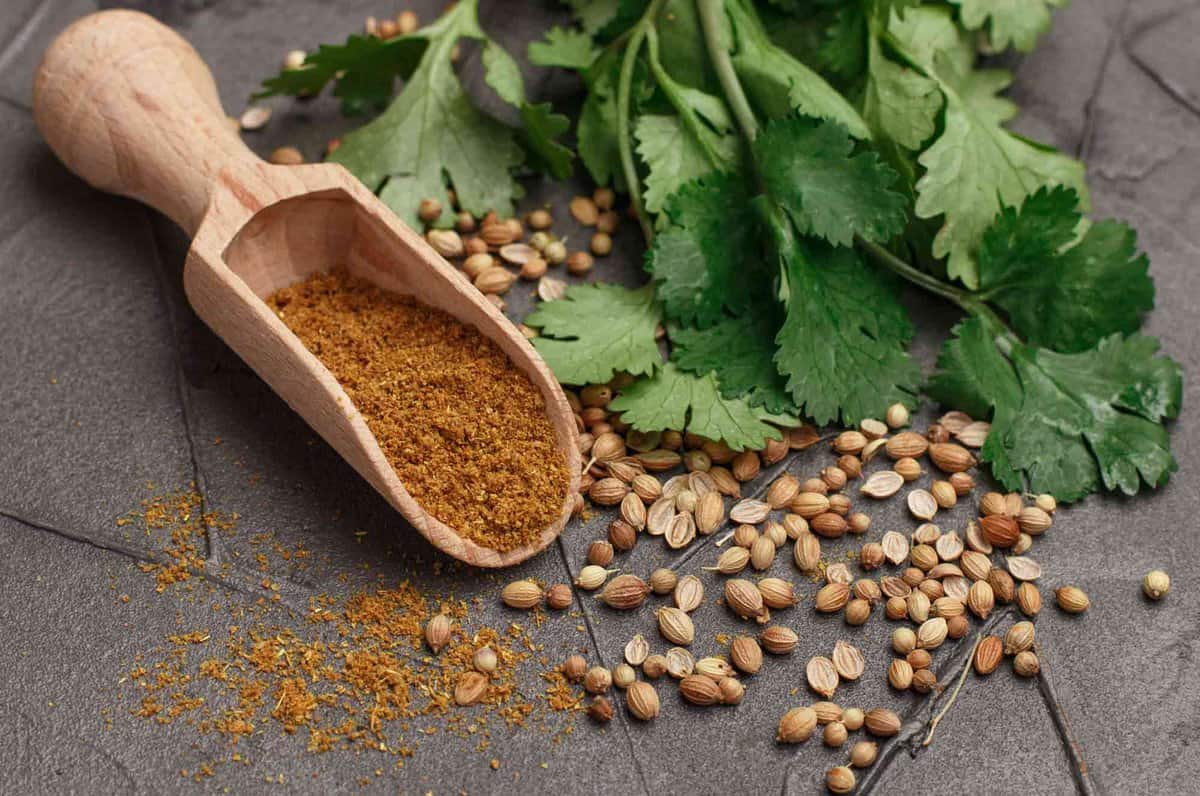
Why it works: Mimics curry’s core flavors are citrus, earthy, and nutty.
Examples: Lentils, veggies, chicken.
Measurements: Equal parts, same amount as curry powder
3. 4 parts Chili Powder + 1 part Cumin

Why it works: It adds smoky depth and heat.
Examples: Stir-fries, stews, scrambled eggs
Measurements: For every 4 teaspoons of chili powder, add 1 teaspoon of cumin.
4. Chaat Masala

Why it Works: Another flavorful Indian blend with cumin, coriander seeds, amchoor.
Examples: Potatoes, paneer, lentils.
Measurements: Same amount as curry powder.
5. Curry Paste

Why it Works: Concentrated flavor and aromatic ingredients like lemongrass.
Examples: Stir-fries, soups, braised chicken.
Measurements: 1-2 teaspoons paste = 1 tablespoon powder.
6. Spice Mix: Smoked Paprika + Turmeric + Ginger
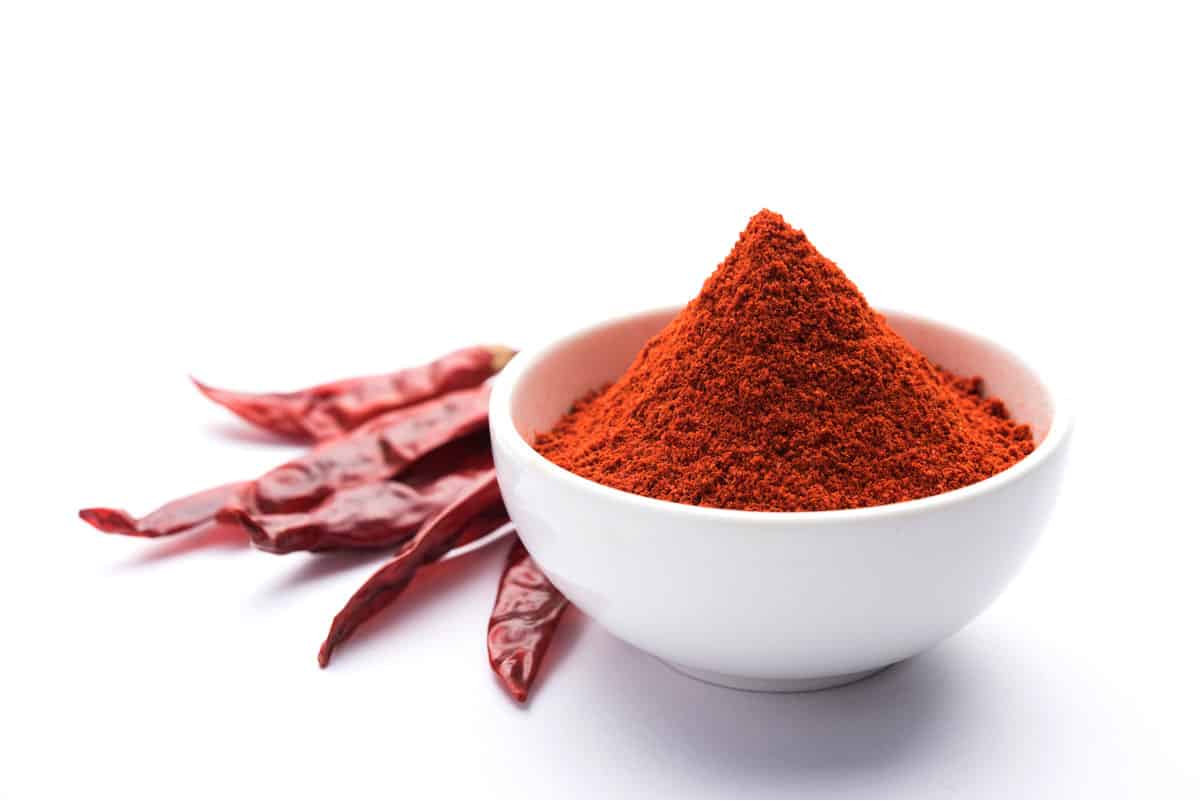
Why it Works: Deeply flavored blend. Echoes curry’s smokiness.
Examples: Roasted vegetables, lentil soup, chicken.
Measurements: Equal parts, same amount as curry powder.
7. Homemade Curry Powder

Why it works: Customizable to your taste and ingredient preferences!
Examples: Any dishes.
Measurements: Same amount as store-bought powder.
8. Cumin + Coriander + Turmeric

Why it works: Another take on curry’s flavor trifecta.
Examples: Lentils, chickpeas, stir-fries.
Measurements: Equal parts, same amount as curry powder.
9. Tandoori Masala
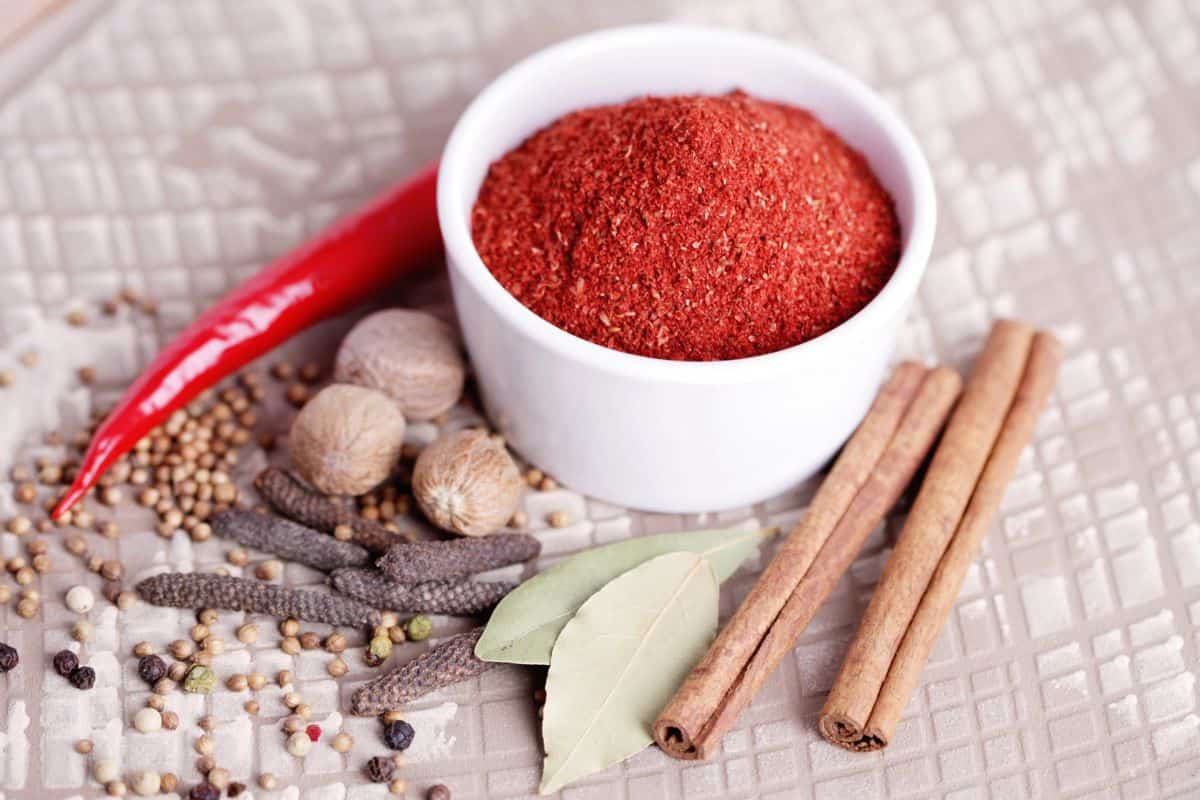
Why it works: Smoky, bright Indian blend with turmeric and cayenne.
Examples: Chicken, paneer, cauliflower.
Measurements: Same amount as curry powder.
10. 5 parts Cumin + 3 parts Coriander + 2 parts Turmeric
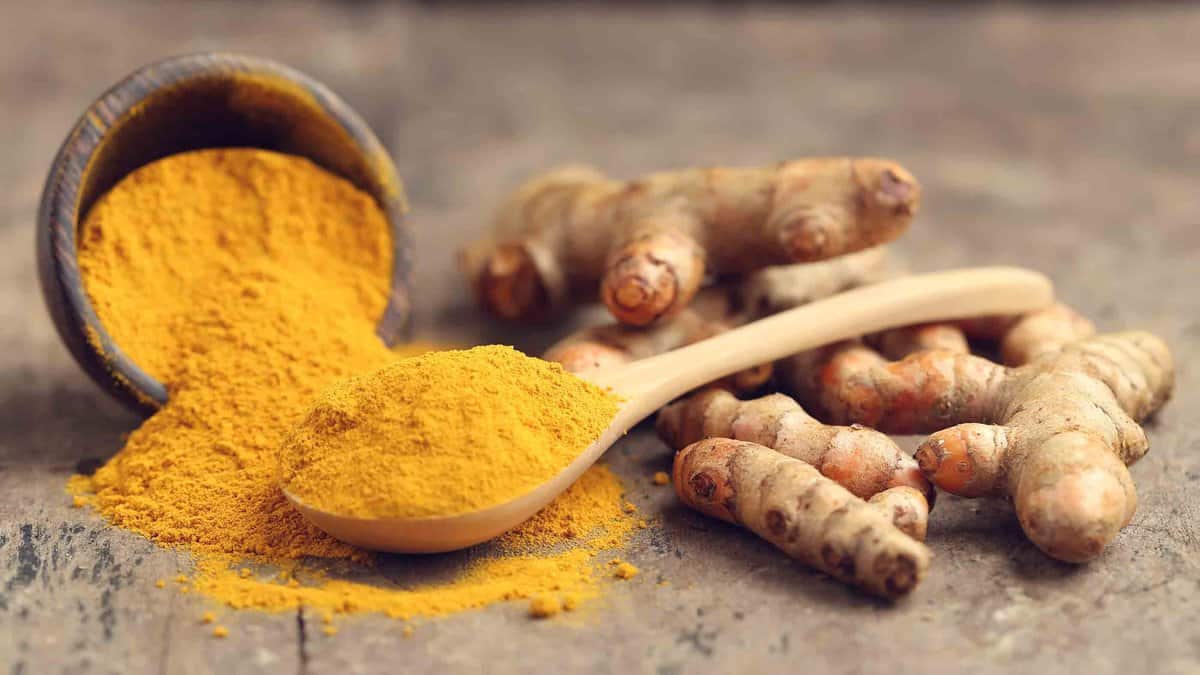
Why it works: Flexible custom blend. Vary ratios to preference.
Examples: Vegetables, eggs, lentils.
Measurements: Use a 1:1 ratio with this spice blend
11. Yellow Curry Powder

Would you like to save this?
Why it works: Turmeric-rich blend mimics curry’s earthiness.
Examples: Chicken, sweet potatoes, chickpeas.
Measurements: Use a 1:1 ratio
12. Jamaican Curry Powder

Why it works: Echoes curry’s vibrancy with allspice notes.
Examples: Chicken, goat, beans, cabbage.
Measurements: Use a 1:1 ratio
13. Berbere Spice Blend
Why it works: This Ethiopian blend offers curry’s heat, plus ginger and fenugreek notes.
Examples: Lentils, chicken, cabbage, spinach.
Measurements: Use a 1:1 ratio
14. Chinese Five Spice Powder

Why it works: Mimics curry’s warm flavor with ginger, clove, and cinnamon.
Examples: Tofu, stir-fries, roasted veggies.
Measurements: Same amount as curry powder.
15. Pumpkin Pie Spice

Why it works: Surprisingly similar flavor notes - cinnamon, ginger, nutmeg.
Examples: Sweet potato curry, oatmeal, roasted veggies.
Measurements: Use a 1:1 ratio
16. Garlic Powder + Paprika + Turmeric

Why it works: Straightforward 3-ingredient blend echoes curry’s savory quality.
Examples: Beans, eggs, chicken, lentils.
Measurements: Equal parts, same amount as curry powder.
17. Japanese Curry Powder/Paste

Why it works: Richer, bolder than typical curry powder with fenugreek.
Examples: Japanese curry dishes and stir-fries.
Measurements: Use a 1:1 ratio
18. Garam Masala + Smoked Paprika

Why it works: Smokiness from paprika contrasts the other’s vibrancy.
Examples: Chicken dishes, lentils, roasted vegetables.
Measurements: Use a 1:1 ratio
19. Persillade (Parsley + Garlic)

Why it works: Bright flavor and aroma resembles curry.
Examples: Roasted vegetables, eggs, pasta.
Measurements: Heaped tablespoon of persillade per teaspoon of curry powder.
20. Ras el Hanout

Why it works: Fragrant Moroccan spice mix containing cumin and coriander seeds.
Examples: Chicken tagine, vegetables, lentil soup.
Measurements: Use a 1:1 ratio
21. Pumpkin Spice Mix + Cayenne Pepper

Why it works: Familiar blend with added heat to mimic curry powder.
Examples: Roasted veggies, oatmeal, pumpkin curry.
Measurements: Add just a pinch of cayenne to taste.
10 Iconic Curry Powder Dishes
Below are notable ways curry powder (73) infuses flavor into cuisine across cultures. Missing this versatile spice blend? Use suggested substitutions in each application.
- Chicken Curry: Curry powder builds savory depth in classic chicken curry. Substitute for curry powder: Garam masala or 4:1 chili powder to cumin ratio.
- Chickpea Masala: This spice blend adds a rich aroma to chickpea curries and masalas.
Substitute for curry powder: Cumin, coriander, turmeric blend. - Thai Coconut Curry: Sweet, nutty curry powder balances Thai curry paste’s heat. Curry powder substitute: Homemade powder or yellow curry powder.
- Vegetable Curry: This ingredient adds a warm, savory flavor to mixed vegetable curries. Good curry powder substitute: Homemade cumin-coriander-turmeric blend.
- Curried Lentils: Earthy curry powder provides depth and aroma to lentil dishes. Curry powder substitute: Garam masala or Berbere spice blend.
- Curried Roasted Potatoes: Curry powder coats potatoes with flavor before roasting.
Curry powder substitute: Pumpkin pie spice or Japanese curry powder. - Curried Fried Rice: Curry powder infuses fried rice with rich flavor and vibrant color. Curry powder alternatives: Turmeric, ground cumin, and curry paste.
- Spicy Meat Rub: Dry curry powder mixes form fast-absorbing rubs for meats.
Curry powder alternatives: Make your own curry powder or use garam masala. - Spiced Popcorn: Sweet-savory curry powder flavors popped popcorn.
Substitute for curry powder: Chaat masala or pumpkin pie spice blend. - Indian Spiced Eggs: Scrambled eggs get savory depth and color from this ingredient.
Curry powder substitute: Turmeric, paprika, garlic powder blend.
Handy Tips for Curry Powder Substituting
- Brown ground spices quickly to amplify nutty notes in blends.
- Layer flavors of whole spices like mustard seeds and curry leaves.
- Test new blends in small batches before applying them to full recipes.
- Store custom mixes for up to 3 months in sealed containers, away from light.
- Adjust ratios based on preferences for heat and spice complexity over time.

What can I use instead of curry powder?
Some of the best alternatives include garam masala, a mixture of chili powder and ground cumin, chaat masala, or a blend of other Indian spices you likely have on hand already, like ground coriander, turmeric, ginger, and cinnamon.
Is curry powder just turmeric?
No, this spice blend contains a blend of up to 20 spices, with turmeric being just one ingredient. Other common spices in curry powder include ground coriander, ground cumin, fenugreek, ginger, cinnamon, cloves, fennel seeds and chili powder.
Is garam masala a substitute for curry?
Yes, it makes an excellent substitute for this ingredient in most dishes. Its complex mix of warm, aromatic Indian spices mirrors common curry powder flavor notes.
What can I use if I don't have curry paste?
Suitable substitutes for curry paste include curry powder dissolved in water to form a thick paste, a blend of garlic, ginger, lemongrass, chili peppers, or a store-bought Thai green or red curry paste.
What is curry powder made of?
This spice blend comprises up to 20 spices, with the core ingredients being turmeric, coriander, ground cumin, and fenugreek. Other common spices are ginger, cinnamon, cloves, fennel, and chili powder.
Is paprika similar to curry?
Not particularly. Paprika has its own distinct flavor, separate from this ingredient's complex spice blend of flavors. However, paprika can be used in small amounts combined with other spices as a substitute.
What is the closest spice to curry powder?
The closest spice-matching curry powder's flavor profile is likely cumin. But for best results, use cumin seeds with other spices like coriander seeds, turmeric, garlic powder, paprika, or cardamom.
Can I use curry sauce instead of curry powder?
No, curry sauce and curry powder are very different. The latter is a dry spice blend, whereas curry sauce is a premade liquid mixture used as a condiment. The sauce won't replicate the flavor or purpose of curry powder when cooking.
How do I substitute curry paste for curry powder?
Generally, use 1-2 teaspoons of paste to replace 1 tablespoon of curry powder. The paste is more concentrated in flavor, so you need less volume. Make other adjustments, like adding water or coconut milk, to achieve the intended consistency.
What can I use instead of curry powder in North Indian style?
Suitable substitutes for North Indian-style curry powder include garam masala, a dry spice blend like chaat masala, sambar powder, or pav bhaji masala, or a homemade blend using whole spices like cumin seeds, brown mustard seeds, and curry leaves.
Can I use regular curry powder instead of Madras curry powder?
Madras curry powder has a significantly spicier, bolder flavor than regular spice blend. You can substitute regular curry powder with a few dashes of cayenne pepper for less heat. Reduce overall quantities when swapping for a milder flavor.
What spices to use for Indian curry?
Common spices in Indian curries include ground cumin, ground coriander, turmeric, ginger, garlic, onion, chili powder or cayenne, black pepper, cardamom, cinnamon, cloves, and bay leaves. The exact blend varies by region and curry type.
What is Korean curry powder different?
Unlike Japanese curry, Korean curry powder has a sweet, mild flavor. It uses less heat from chilies and balances the spices with more ginger, cinnamon, and nutmeg for sweeter, warmer tones.
Is curry powder the same as Japanese curry powder?
While both provide a rich, aromatic flavor, Japanese curry powder uses spices like turmeric and cumin combined with apples and honey for added sweetness and a thicker sauce-like consistency. It has a more intense, browned, roasted flavor overall.
Is yellow curry powder the same as garam masala?
No, these are two very different Indian spice blends. Yellow curry is turmeric-heavy and applies more to Thai cuisine. Garam masala does not contain turmeric and has a brighter, more aromatic flavor profile.
What is Jamaican curry powder? Is it the same as its regular counterpart?
No. Jamaican curry powder is spicier, more robust, and has signature tropical notes of allspice berries, scotch bonnet peppers, and cloves. Regular curry powder has a milder flavor and varies by region.
How does Thai curry powder differ from the standard version?
The main spices in Thai spice blends are black pepper, cumin, coriander, turmeric, and chili peppers for added heat. Additional Thai-inspired flavors come from lemongrass, galangal, and kaffir lime leaves. The Thai version also uniquely incorporates shrimp paste and green mango powder for extra tang.
Compared to standard Indian spice blends, Thai mix spotlights fewer dried spices, letting the fresh green aromatics shine. However, ingredients like cumin, fennel seeds, and turmeric overlap with some Indian curry mixes. But Thai blends minimize components like cinnamon, cloves, and cumin seeds. They also emphasize spicier, more pungent flavors compared to the warmer palette of some Indian ground spice combinations.
The result is a blend with an assertive aroma and strong chili-forward flavor, contrasting subtler, more layered standard Indian blends. So, while Thai curry incorporates curry powder as an ingredient, its flavor profile stands apart thanks to quintessential Southeast Asian herbs, chili heat, and pungent black pepper as the dominant taste.

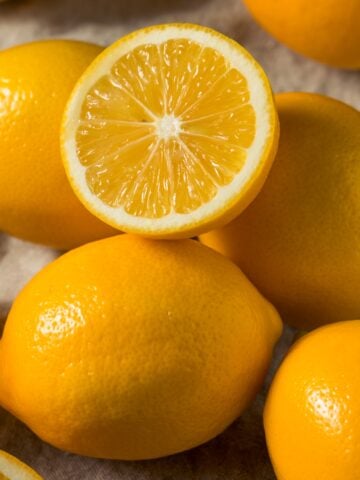
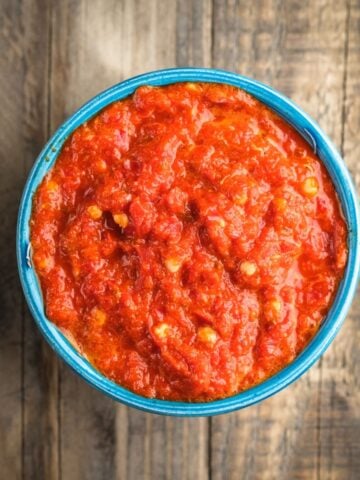


Make my day! - Share your thoughts...